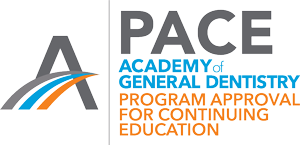 BUYING FOR OTHERS?
Click here to buy for others.
BUYING FOR OTHERS?
Click here to buy for others.Dental Infection Prevention and Control eHandbook
Demonstrate your commitment to patient safety by confirming and enhancing your knowledge in dental infection prevention and control. Use this handbook as a standalone reference or as part of the Dental Infection Prevention and Control Certificate Program.
Course Overview
Infection control lapses in dental settings can have a life-threatening impact, yet national surveys of dental settings reveal a critical lack of standardized education and training protocols for all aspects of infection control. The Dental Infection Prevention and Control eHandbook is designed to help users fill gaps in their infection control knowledge and ensure compliance with federal and state regulations, guidelines and standards.
Intended for any oral healthcare professional who is responsible for infection control procedures in a dental setting, this comprehensive, interactive resource allows users to apply their knowledge and experience in a highly relevant, goal-oriented format. Photos, case studies, and other methodologies reinforce learning and application of the material. In addition, the handbook includes a downloadable companion workbook for guided note-taking and links to key resources.
This continuing education activity has been planned and implemented in accordance with the standards of the ADA Continuing Education Recognition Program (ADA CERP) through joint efforts between the DALE Foundation and the Association for Dental Safety (ADS).
Course Credentials
Course Compatibility
Desktop, laptop, tablet and mobile
Educational Method
Electronically mediated activity (e.g., photos, case studies, guided note taking)
AGD Code: 148
The eHandbook covers the following learning objectives:
UNIT 1: Infection Control and Infectious Diseases in Dental Healthcare Settings
Chapter 1: Key Concepts in Infection Control
- Discuss the relationship between healthcare delivery and the potential for disease transmission
- Identify 4 basic principles of infection control
- Describe recommendations and regulations applicable to dental healthcare settings
Chapter 2: Transmission and Prevention of Infectious Diseases in Dental Healthcare Settings
- Identify the process of disease transmission
- Describe factors associated with the likelihood of infection
- Describe the chain of infection
- Identify precautions used to reduce the risk for exposure to infection
- Discuss the dental healthcare setting infection control plan
- Describe antibiotic resistance
- Define antibiotic stewardship and identify national measures to prevent antibiotic resistance
Chapter 3: Infectious Diseases of Concern in Dental Healthcare Settings
- Identify and describe diseases associated with bloodborne pathogens
- Describe the components of an exposure control plan for occupational exposures
- Identify and describe diseases associated with airborne pathogens
- Identify and describe diseases associated with droplet pathogens
- Identify and describe diseases associated with contact pathogens
- Identify and describe waterborne pathogens of concern associated with dental unit waterlines
- Identify and describe other pathogens of concern in dental healthcare settings
UNIT 2: Elements of Infection Control in Everyday Practice
Chapter 4: Infection Control Practices in Dental Healthcare Settings
- Identify when to perform hand hygiene
- Identify factors that should be considered when choosing hand hygiene products
- Discuss appropriate hand hygiene technique
- Describe the importance of respiratory hygiene and cough etiquette
- Identify CDC recommendations for respiratory hygiene and cough etiquette
- Identify the types of PPE used in dental healthcare settings
- Describe the process of donning and removing PPE
- Discuss types of dermatitis and allergic reactions in dental healthcare settings
- List ways to keep hands healthy
- Describe the importance of a safety culture in dental healthcare settings
- Identify appropriate techniques of preventing sharps injuries
- Identify the purpose of the Needlestick Safety and Prevention Act
- Discuss recommendations for safe injection practices
Chapter 5: Sterilization and Disinfection of Patient-Care Items
- Identify how patient-care items are categorized based on their risk of transmitting a disease
- Describe the steps used in instrument processing
- Identify why dental handpieces require special consideration for reprocessing
- Discuss how single-use devices are used in dental healthcare settings
Chapter 6: Environmental Infection Control
- Describe infection control procedures for clinical and housekeeping surfaces
- Discuss the steps of contamination management
- Identify requirements for chemical safety records
- Identify types of medical waste generated in dental healthcare settings
- Describe how regulated medical waste is managed
- Discuss how blood and body fluids are disposed
- Describe how records are kept for dental waste
Chapter 7: Dental Waterlines, Biofilm, and Water Quality
- Discuss the role of biofilm in dental waterlines
- Identify infection control strategies for using water in dental healthcare settings
- Describe processes for maintaining and monitoring dental water quality
Chapter 8: Special Considerations
- Describe infection control practices for saliva ejectors, dental radiology, preprocedural mouthrinses, and the dental laboratory
UNIT 3: Infection Control Policies and Procedures at the Facility Level
Chapter 9: Elements of an Infection Control Program
- Describe elements needed to implement an infection control program
- Identify the importance of and methods for evaluating an infection control program
- Describe different types of written reports in dental healthcare settings
This product is part of the bundles listed below. Buy together and save!
Dental Infection Prevention and Control Certificate
Subject Matter Experts
Ms. Jorgensen owns Smith & Jorgensen, a dental consulting company that focuses on training in infection prevention and control and dental clinic efficiency. She is also employed at Portland Community College, and teaches in the Integrated Community Dental Assisting Program. Ms. Jorgensen has no relevant financial relationships to disclose.

The DALE Foundation is an ADA CERP Recognized Provider. ADA CERP is a service of the American Dental Association to assist dental professionals in identifying quality providers of continuing dental education, ADA CERP does not approve or endorse individual courses or instructors, nor does it imply acceptance of credit hours by boards of dentistry. Concerns or complaints about a CE provider may be directed to the provider or to ADA CERP at ada.org/cerp.

